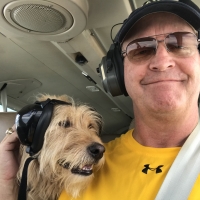Prop RPM settings on approach
Was told by a CFI, always have the prop rpm on max for short final 'in case you have to go around'... Quick question: what do most Piper Lance pilots do? Set max RPM on Final/short final, or limit to 2700 or less to obtain & maintain recommended approach speed? Asking for a friend...


Comments
In my turbo Arrow and all of my Seneca's I had props forward to help slow the plane down. It makes a great brake. And, of course, in case you need to go around...
Scott Sherer
Wright Brothers Master Pilot, FAA Commercial Pilot
True, i just hate seeing the EGTs spike up to max on the JPI Eng monitor… thanks.
Dan
1969 Arrow 28R-200
Herky bird pilot by day
For the Seneca III the POH has full forward for the props and I agree with Scott they make for nice brakes. The props should not over rev as they are controlled by the governor to the max RPM. The big concern on go around is over boost with the fixed wastegate design common to the TSIO-360 series.
On short final with partial power and the props full forward the rpm will be likely be less than full because of the low power generated at partial power settings (similar to when taxiing or engine runup).
Eric Panning
1981 Seneca III
Hillsboro, OR (KHIO)
Thanks all, very reassuring. Safe flying.
Pushing propeller forward at low power setting should not cause EGT to be very high… something is odd. What is your mixture setting?
Karol Zadora
PA28RT-201T Turbo Arrow IV
Seattle Area
I usually will pull the power back on final to capture the visual glide slope from the high side, apply full prop and then add back some throttle to maintain.
Rhranzau, where is your mixture in all of this? full forward? I usually have the mixture a bit lean on approach as you can get a light backfire. If your descent rate is relatively high the prop can spin faster than the engine is set up for (prop driving the engine) In this case the air pumping might exceed the fuel servo position and you could maybe hit peak? Just speculating here.
For non-geared engines at low power settings this is not a big issue either way. At low power EGT can be anything. The temp might be high but there is no mass flow vs full power.
Eric Panning
1981 Seneca III
Hillsboro, OR (KHIO)
Fuel mix always on full rich on final/short final.. Sometimes at KPDK they keep you high until close then its chop & drop.. Thanks for the input.
In my 1985 Dakota,I go prop full on final and leave my mixture at LOP, if I have to go around my hand automatically covers all 3 levers.
Adding to the chorus here.
I fly the pattern and approach with the prop still set in cruise (for me, that is 2,300 - 2,400). During the first GUMPS (midfield if a visual, IAF if an approach) I consciously leave the RPM's alone for the 'P'. At ~17" - 18" MP during this phase, there are no concerns with lugging the engine.
On final / FAF, the aircraft is pitch and speed stabilized, and then I go through another GUMPS where this time the prop goes full forward. MP during this phase is already fairly low. As the prop lever goes forward, there is no noticeable change in sound, no noticeable change in RPMs, and no additional 'push-back' feel of drag from the prop. At this point, the Saratoga is fully configured for both landing and take-off. Should I need to go-around, there is no real thinking about re-configuration: just push the throttle full forward and then grab the other two which are already there. Easy-peasy.